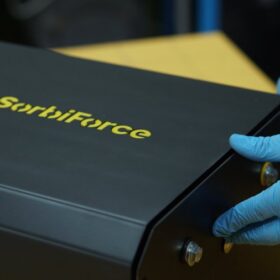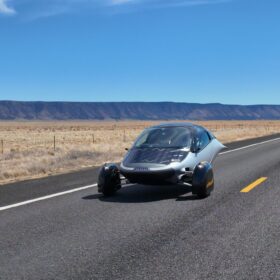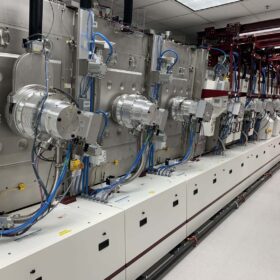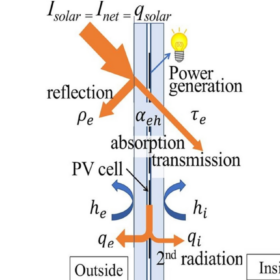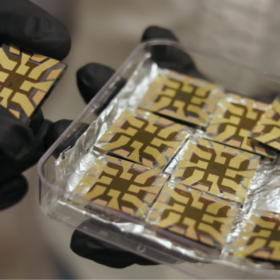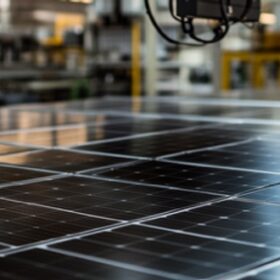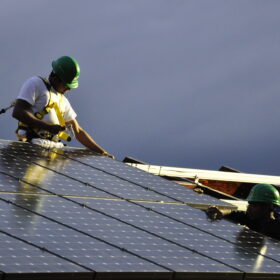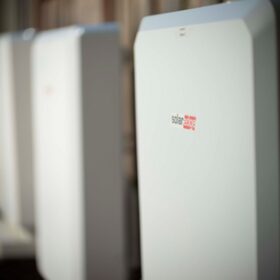Carbon battery startup aims to make energy storage circular
SorbiForce, a Ukrainian energy storage company now in Arizona, has developed metal-free organic batteries made entirely from agricultural waste.
Scientists propose manufacturing process to build perovskite solar cells on the Moon
German scientists believe that power generation for future habitats on the moon could be achieved by manufacturing halide perovskite cells locally, using regolith-based moonglass.
Experimental EV battery charges in 10 minutes in sub-zero temperatures
U.S. scientists have developed a lithium-ion battery for electric vehicles that enables high range and fast charging in cold weather. The battery uses a single-ion conducting glassy solid electrolyte coating and does not require changes to chemistries or production processes.
Watch: Solar electric vehicle completes 300-mile journey through U.S. Southwest
The pre-production vehicle from Aptera offers up to 40 miles of charge-free range per day from its 700 W of solar power, said the company.
Thin-film solar patents, manufacturing equipment listed for sale
A cancelled factory led to the sale. The solar cells produced by the equipment are “game-changing tech at liquidation values,” said the seller.
Field survey protocol for monitoring PV backsheet degradation
A research group including scientists from U.S. National Institute of Standards and Technology (NIST), Underwriter’s Laboratories Inc., and the National Renewable Energy Laboratory (NREL) has outlined a new protocol for assessing PV module backsheet degradation in the field. Through the proposed framework, the researchers analyzed PV backsheet degradation across 41 sites, with exposure times ranging from 1 to 38 years.
MIT-based startup launches solar construction robotic system
Charge Robotics partnered with Solv Energy to pilot a portable factory system intended to make solar installations safer and more efficient for increasingly challenging terrain.
Enhancing PV glazing prospects in solar architecture
To make it easier to adopt building integrated PV (BIPV) as a glazing material, a group within the IEA Photovoltaic Power Systems Programme (IEA-PVPS) has tackled the solar heat gain coefficient (SHGC) calculation for BIPV. It is part of IEA PVPS Task 15 international standardization efforts.
Titanium makes perovskite solar cells more durable
After finding a way to make spiro-OMeTAD, a popular perovskite solar cell hole transport layer, less prone to heat-induced crystallization, researchers at Georgia Institute of Technology are now seeking partners to scale the technology for large-area PV cells.
Tandem PV moves toward perovskite manufacturing with $50 million funding announcement
With a perovskite layer 200 times thinner than silicon and requiring just 10% of the energy needed to produce conventional panels, Tandem PV reports it will be able to reduce energy use during manufacturing.
